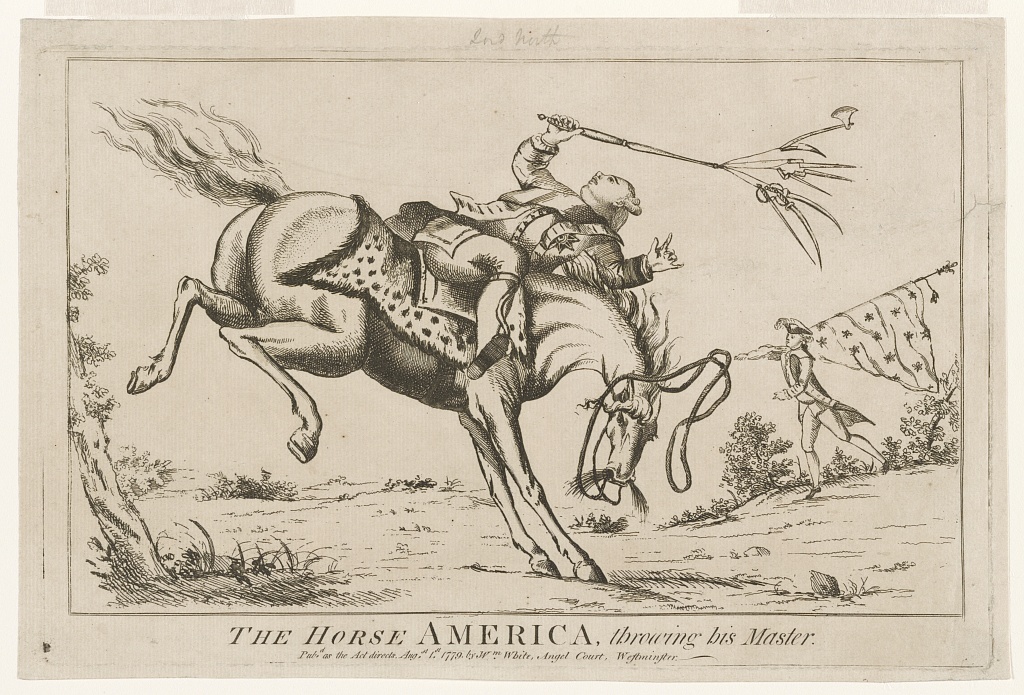
bucking bronco
Recently National Review compared and contrasted The United States and Britain: “Every nation needs a mythic anchor. Ours is our revolutionary self-founding. Britain is its longer, slower maturation.”
Eight years after the Civil War ended a Southern newspaper didn’t feel much like celebrating the American founding. From the July 4, 1873 issue of The Daily Phoenix:
COLUMBIA, S. C.
Friday Morning, July 4, 1873.
Fourth of July.
The recurrence of this anniversary once gladdened the hearts of men and boys throughout all this vast country. The celebration is now largely discontinued, and where it does take place at all, it is generally a tame or hypocritical affair. There is an irrepressible feeling that the significance of the day has been lost; that it is, in fact, no longer independence day. The glories of Banker Hill, of Eutaw, the Cowpens, Yorktown and all the other celebrated battle-fields of the revolution, are, nevertheless, cherished in the hearts of the people. But they will not make a mockery of celebrating them in the circumstances in which they now are. The heel of the oppressor must be lifted from their necks, before they can again take part in a day which they once delighted to honor. They leave it to those with whom profession is as good as practice, and who find political and personal advantage in keeping up the hollow ceremonial.
On the other hand, some Northerners were reportedly very excited about celebrating Independence Day. They started weeks ahead of time. From the July 12, 1873 issue of Harper’s Weekly:
HOME AND FOREIGN GOSSIP.
It is coming, rapidly coming nearer. We perceive it in the very air; the topic is on every tongue; the sound of its approach vibrates on the ear. Newspapers need not announce its dangerous propinquity; there is no occasion to herald its arrival from the house-tops. Weeks ago the very boys in the street whispered of its fast-coming footsteps, and now they noisily shout its name on willing and unwilling ears. Do not be alarmed, reader; it is not the cholera of which we speak—it is only the “Glorious Fourth!” About four weeks ago a sudden explosion at our feet announced that the lengthened Fourth of July had fairly commenced. Since that time, at early dawn, at noonday, and at night, we have been incessantly warned of that anniversary whose culmination is so near. The squibs and crackers and torpedoes, which have snapped and fizzed in our ears these past weeks, would have extinguished patriotism in any but an American heart. But every true-born son — and daughter, in these days of “equal rights” — of America is expected to open not only patient but delighted ears to the ceaseless noise and clatter with which we celebrate our nation’s Independence-day. Well, the sick and nervous and quiet-minded must endure. To them it seems strange that there is such delight in noise. But so it is. Boys are the same the world around, and by them no day is hailed with keener pleasure than is the Fourth of July. It matters not to them that it brings din and dust, smoke and rubbish, and they enjoy it to the uttermost in spite of burned fingers and scorched trowsers.
___________
The American Public Health Association assures us that thorough cleanliness, an abundant supply of pure water, skillful disinfection, temperate habits, wholesome diet, and pure air are the trusted means of health and security in all places,and for all classes of people, when exposed to the infection of cholera. This so much dreaded disease is now pretty thoroughly understood, and by timely and intelligent means may be prevented, or controlled and extinguished.
______________________ …
It seems that the Fourth of July was still a noisy and possibly dangerous celebration five years later – at least in some places.
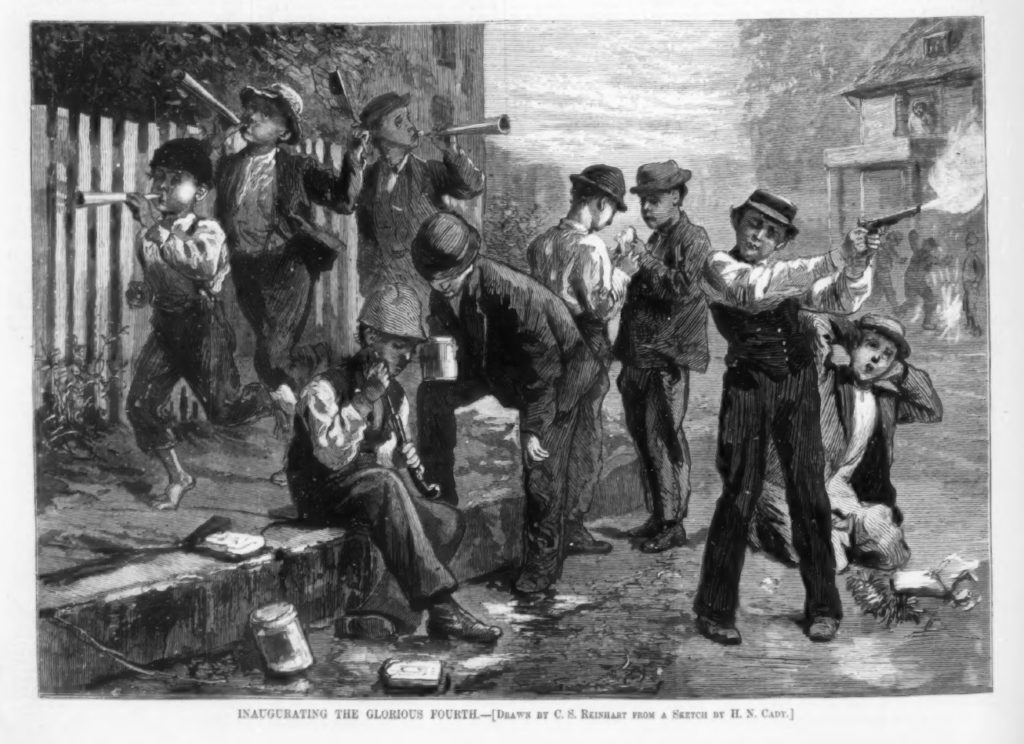
Harper’s Weekly July 13, 1878 page 548
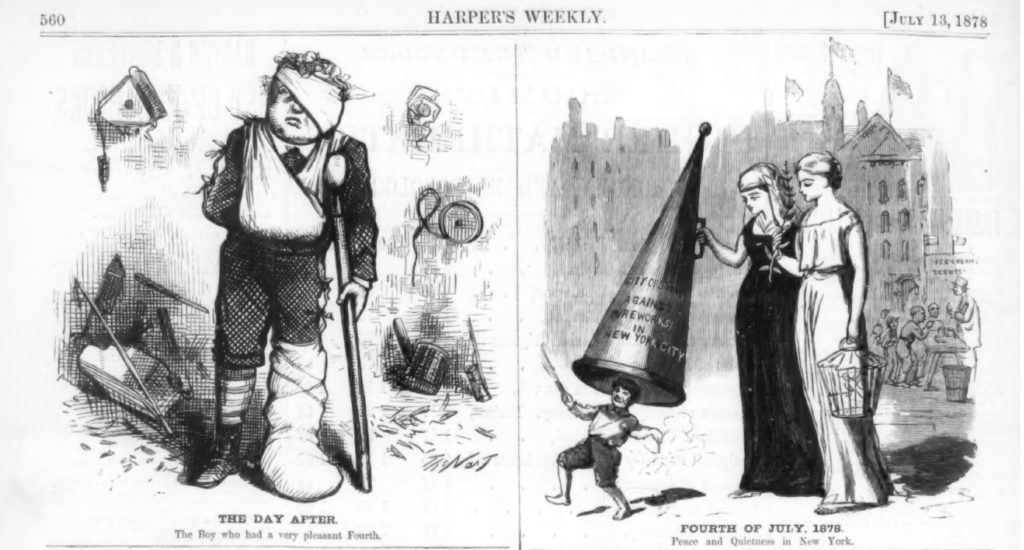
still not the cholera
To get back to Columbia’s Daily Phoenix, the editors might not have celebrated Independence Day but they did observe it. A notice on the same page as the editorial explained there wouldn’t be a July 5th issue because the paper was taking the Fourth off. Also on the same page was a long correspondence from someone who had the chance to view the original Declaration of Independence:
THE FOURTH OF JULY.- A correspondent furnishes the following interesting account of the inception of the Declaration of Independence. It was written shortly after inspecting the original, in the Patent Office in Washington. We make free extracts, as appropriate to the “Day we Celebrate:”
I wandered round the edifice, when, in not a very conspicuous place, I stumbled upon the original Declaration of Independence. I could hardly believe my own eyes. It was very much faded, but I read and re-read it, and I traced every name. It is the most important document connected with the history of our country, and the history of the world. In reading the glorious document, I was immediately transported to Independence Hall, Philadelphia, and back to July 4, 1776, and to the men who signed it. I listened to the discussions that preceded it, and then I witnessed their fixing their names to that immortal paper. There were the representatives of thirteen colonies struggling for freedom.
The declaration was not a hasty production, but prepared with great care, and adopted after mature consideration, weighing every sentence, every word, and every sentiment. On the 11th of June, a committee, consisting of five, viz: Thomas Jefferson, John Adams, Benjamin Franklin, Roger Sherman and Robert R. Livingston, was appointed to prepare the declaration. In this committee, Virginia, Massachusetts, Pennsylvania, Connecticut and New York were represented. Jefferson, though one of the youngest of the committee, and one of the youngest members of the House, was chairman. What confidence they reposed in him, when we consider his age, and the splendid men who were on the committee with him. …
The document itself is a sublime wonder. It is not a class of “glittering genealogies,” but contains great and eternal principles, drawn from the gospel of freedom. The Bible is a declaration of independence; it is a divine declaration of independence; it is a divine declaration of human independence. Our fathers said: “We hold these truths to be self-evident; that all men are created equal; that they are endowed by the Creator with certain inalienable rights; that among them are life, liberty and the pursuit of happiness. All this is found in Paul’s memorable sermon on Mars Hill, where he declared that “God had made of one blood firm reliance on Divine Providence, we mutually pledge to each other our lives, our fortunes and our sacred honor. “Every man who signed it counted the cost and weighed the issues. Each knew that if they failed of securing their independence, they would be executed for high treason. Was there ever such a pledge – first, their lives; second, their fortunes; third, their sacred honor? Not common honor, not ordinary honor, but the most exalted, the purest honor. This was the crowning pledge – as if it were far in advance of either “life” or “fortune.” This is the grand, sublime climax. It was indeed the world’s wonder and the world’s model. There were fifty-six signers.
The first-that we are introduced to is John Hancock, the President of the Congress, the merchant prince of Boston – as pure a patriot as ever lived; one who said, “Burn Boston, and make John Hancock a beggar, if it is necessary to save the nation.” He did not write his name in a fine, lady’s hand, but in full, round, bold letters, and throwing down his pen, he said, “I think King George can read that without his spectacles.” …
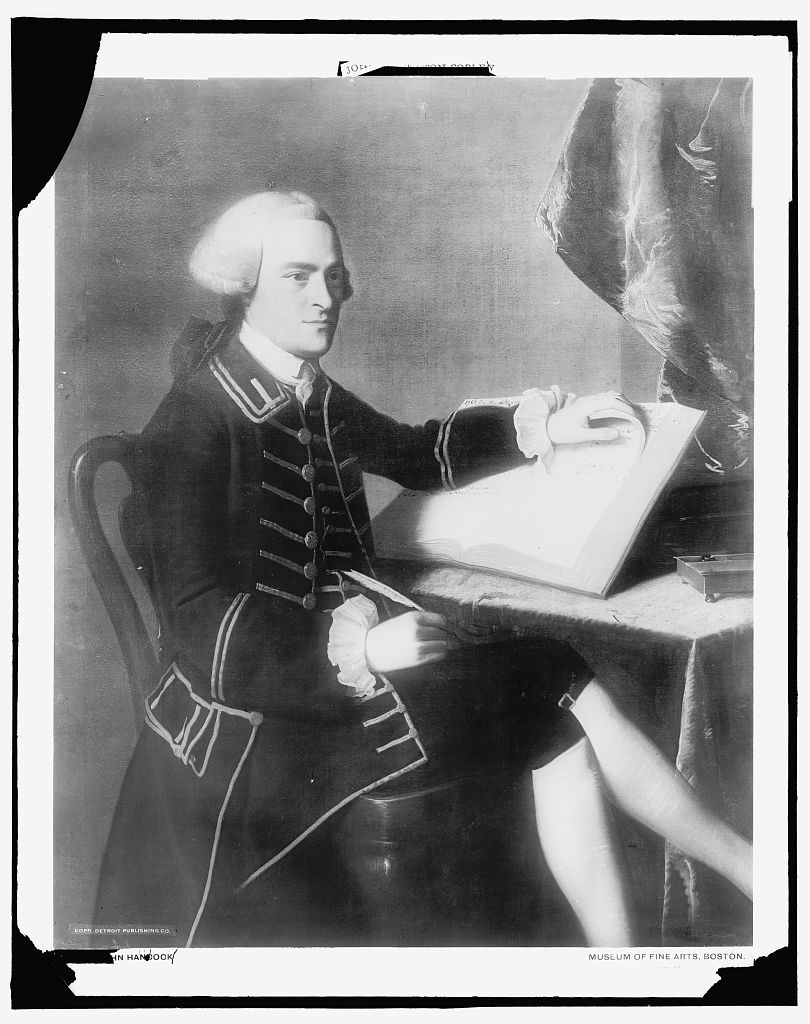
large signature
The Declaration of Independence has been through a lot in two hundred and forty-seven years. According to the National Archives, much of the fading the correspondent noticed was due to its exhibition at the Patent Office: “While the Declaration hung on a wall with some shade from the south, the cumulative exposure to light in the space—especially for the 35 years of exhibition—was extreme.” During the 19th century the document was on display for over fifty years uncontrolled conditions. More damage occurred in the early 20th century, including a mysterious handprint in the lower left-hand corner. Nowadays the Declaration, Constitution, and Bill of Rights are all on display at the National Archives’ Rotunda for the Charters of Freedom.
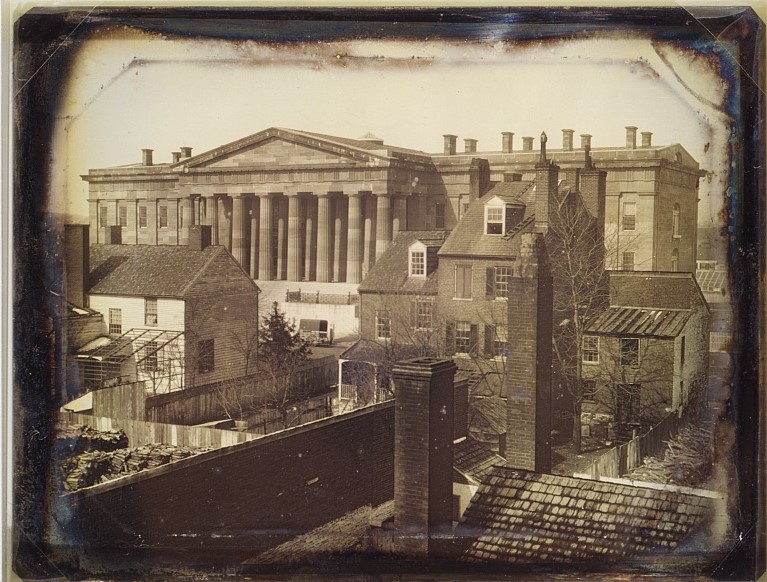
Patent Office, c1846
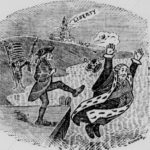
The Detroit Times July 5, 1909
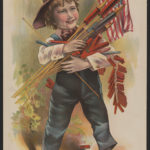
ready to celebrate
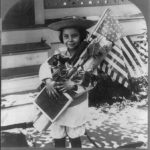
“equal rights” c1906
The quote from National review was on page 12 of its May 29, 2023 issue. The context was the coronation of Charles III. He’s considered the 62th English and/or British monarch going all the way back to the early 9th century – Ecgberht, King of Wessex.
[July 7, 2023] I should have mentioned that John Hancock’s statement about King George’s spectacles is now considered apocryphal – see Wikipedia.
From the Library of Congress: the 1779 cartoon showing America throwing King George III – but Lord North, the British prime minister from 1770-1782 written on the image – this is a British cartoon; the July 4, 1873 issue of Columbia, South Carolina’s The Daily Phoenix (page 2); F Street facade of the Patent Office; happy boy, c1901; well-armed girl; the images from the editorial page (image 8) of the July 9, 1909 edition of The Detroit Times – an editorial pointed out that child labor in factories could be at least as dangerous for boys and girls as Fourth of July firecrackers, page 1 reported 19 killed and 427 hurt in Fourth of July celebrations across the country, 10 were killed by toy pistols (that’s what it says), a Library of Congress blog provided documentation that showed the 1909 total number of killed and wounded to be much higher; Carol M. Highsmith’s 2010 photo of the fireworks store near Decatur, Alabama.
The 1873 Harper’s Weekly content is from Hathi Trust; the section reproduced above is on page 599. I found the images from the July 13, 1878 issue of Harper’s Weekly at the Internet Archive
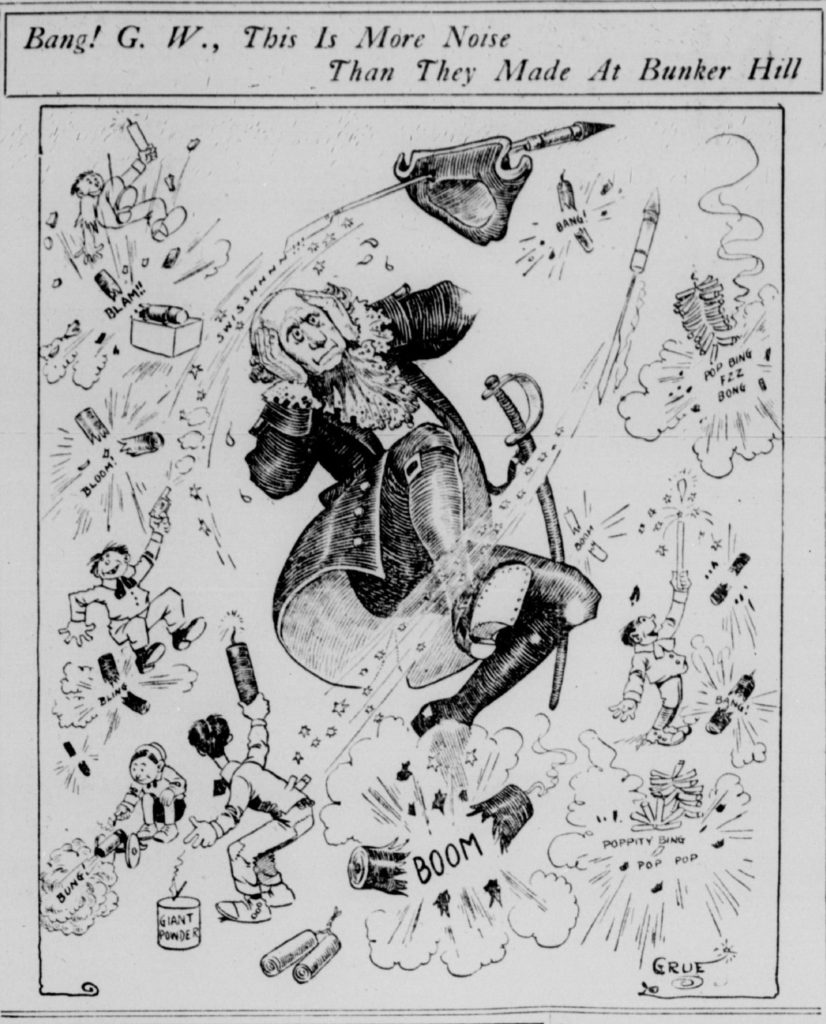
The Detroit Times July 5, 1909

spirited ’76 (Detroit Times 7-5-1909)
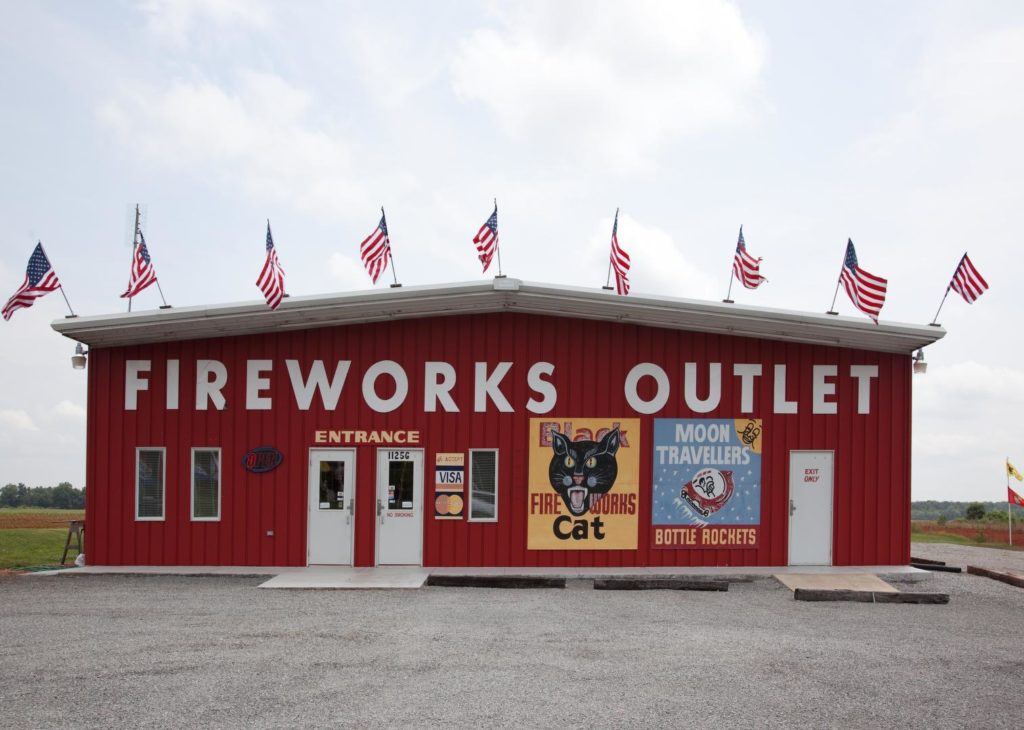
near near Decatur, Alabama 2010











